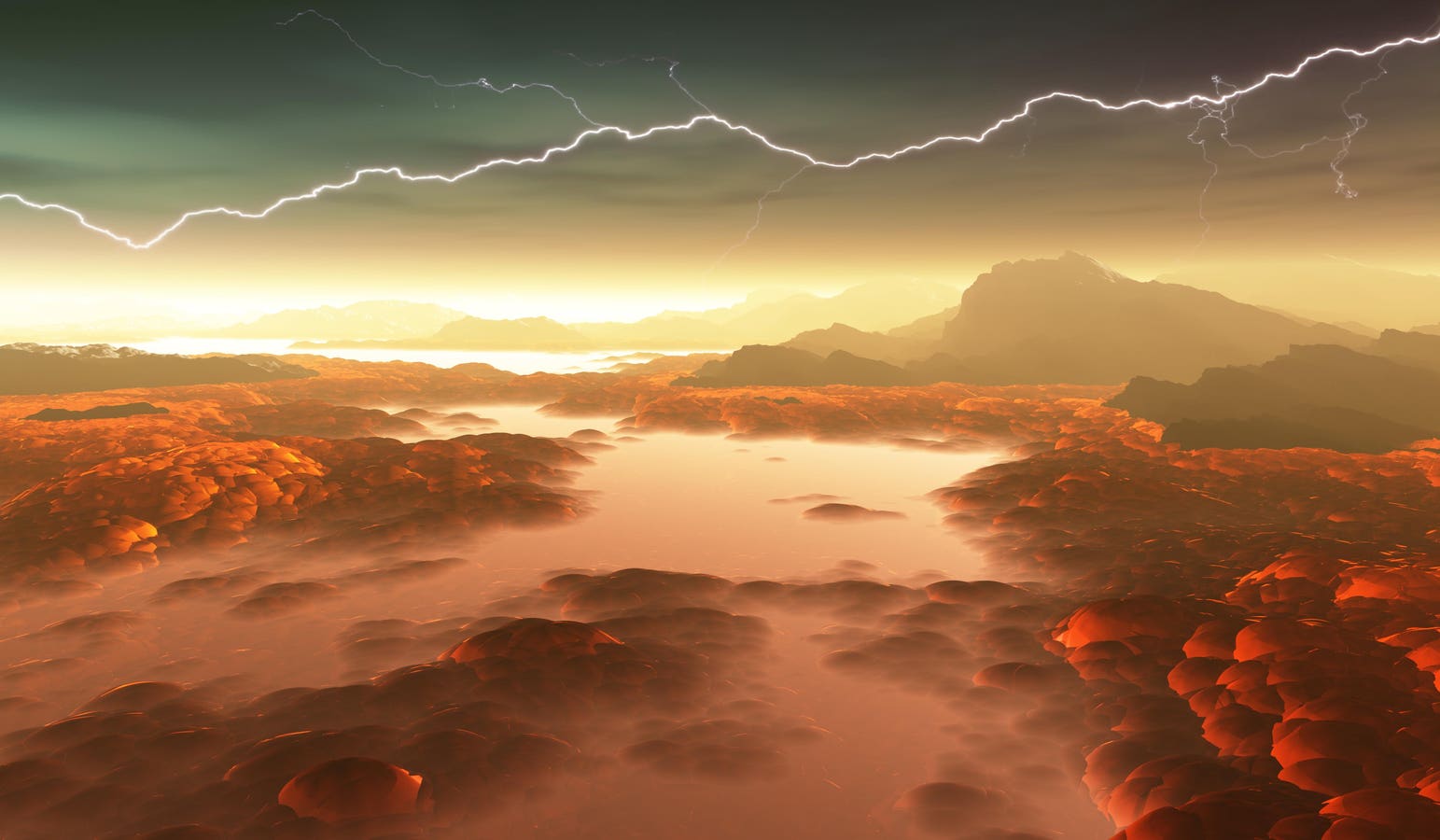Surface of Venus. Hot lava flows on Venus. 3d illustration
The old adage that it’s easier to prove a negative could play a crucial role in characterizing nearby exoplanets that could harbor life. The idea is that looking for earth-like planets is tough enough without wasting time on false positives.
Yet the authors of a recent paper appearing in the journal Science Advances propose using the detection of sulfur dioxide in the atmospheres of extrasolar Venus-like planetary hellholes to serve as a negative chemical marker for water and life as we know it.
It’s really difficult to look at the exoplanet population and identify habitable planets that have liquid surface water, Sean Jordan, the paper’s lead author and a planetary scientist at ETH Zurich, tells me at the recent European Geosciences Union General Assembly 2025 in Vienna.
But if you can identify sulfur dioxide in their atmospheres, that is a negative sign for water, says Jordan. That’s a telltale sign that that, at least for now these planets don’t have liquid water and are not going to be a great place to look for life, he says.
We show that the inner edge of the habitable zone can now be mapped among exoplanets using their lack of surface water, which, unlike the presence of water, can be unambiguously revealed by atmospheric sulfur, the authors write. For instance, sulfur dioxide is abundant in our own Venus’s atmosphere compared to Earth but the authors note is expected to be scrubbed from habitable planetary atmospheres by precipitation.
These types of searches would also enable planetary astrophysicists to finally define the inner edge of habitable zones around dozens of nearby M-dwarf spectral type stars. Such stars range in size from about a tenth to a half the mass of our own G-type star. And, perhaps most importantly for astrobiology, have exceedingly long lifetimes on the so-called main sequence, as hydrogen burning stars.
The Most Common Stars
Not only are red dwarf stars the most common stars and planetary systems in the galaxy, but they are geometrically favorable because they’re smaller, so we get higher planet to star size ratios, says Jordan. This gives us a bigger signal when these planets transit in front of their parent stars, he says.
Until now, a key challenge has been defining a given solar system’s so-called habitable zone, the most simplistic definition of which is where a given terrestrial planet can harbor liquid water on its surface.
Whether planets orbiting these M dwarf stars can even hold on to atmospheres at all remains an open question, says Jordan. That’s because they’re being blasted with so much extreme ultraviolet and X ray radiation, he says.
An Astrophysical Twin?
In truth, given its size and mass, our planet Venus is virtually an astrophysical twin to our own Earth. But that’s where most of the comparisons end, since Venus’ surface is hot enough to melt lead and its atmospheric pressures are more than 90 times that of our own. Yet as is oft repeated, if we can’t understand the planet next door, what hope do we have of understanding the thousands of new extrasolar planetary systems that have been discovered by astronomers in the last three decades?
Estimates of the inner edge of the habitable zone depend heavily on modeling assumptions and whether or not a planet has evolved from a “hot start” or a “cold start,” the authors note. Models of slowly rotating planets initialized with surface water oceans (a cold start) can maintain habitable conditions well inside the traditional Venus zone of a star via a cloud-climate feedback, they write.
With NASA’s Webb Space Telescope, the critical next step in testing the origin and prevalence of life on nearby exoplanets lies in mapping the inner edges of habitable zones around M-dwarf host stars, the authors note. Positively identifying a Venus-like atmosphere, with a surface too hot to support liquid water, is imperative in constraining habitability among the rocky exoplanet population, they write.
Was Our Own Venus Ever Habitable?
We can’t say yet with any certainty whether Venus was born dead, and water only ever existed as steam in a really hot atmosphere that was eventually lost, or whether it was habitable, says Jordan. But the question of whether our Venus could have ever been habitable in the past will have sweeping implications for the possible habitability of Venus-like exoplanets, he says.
As for Earth?
We’re very fortunate to have a planet where all of these stabilizing climate feedbacks are occurring, but we don’t know how prevalent that is in the universe, says Jordan.








